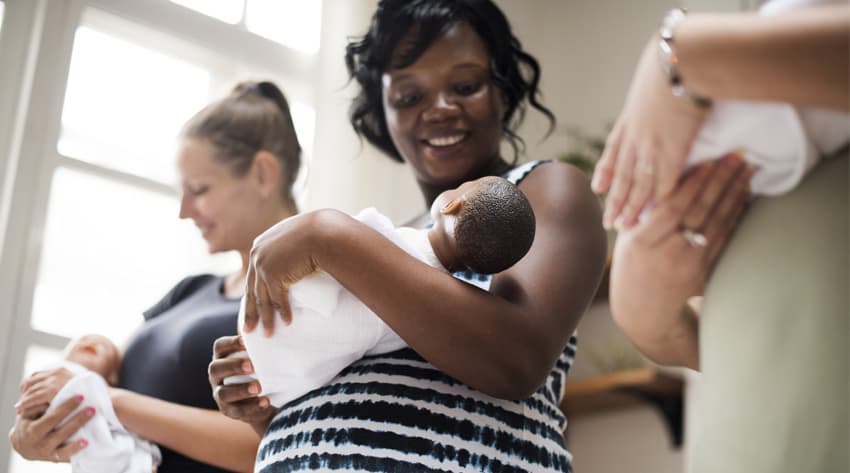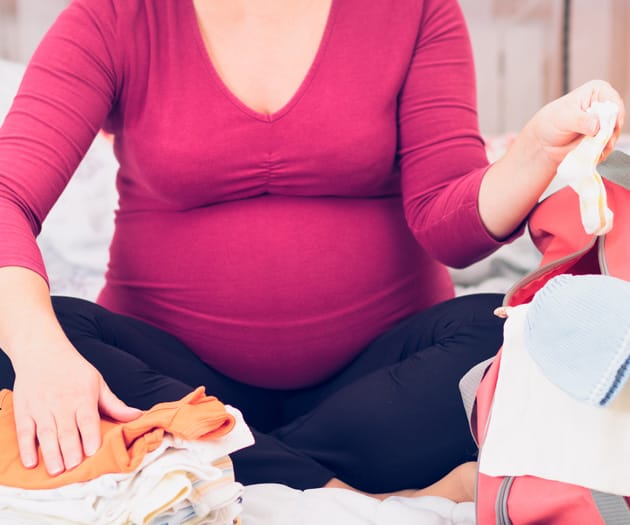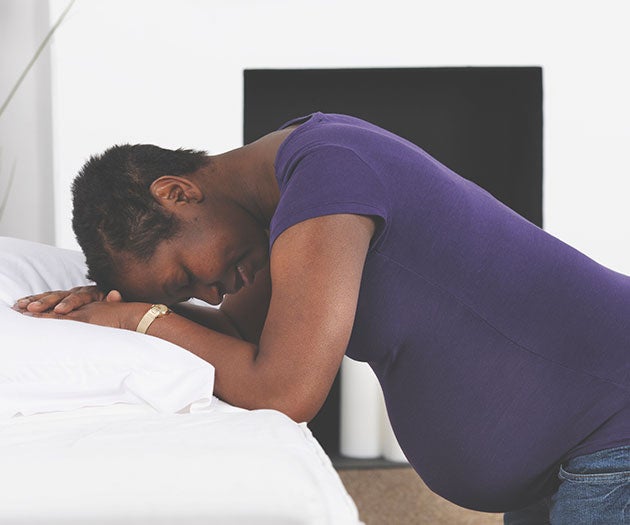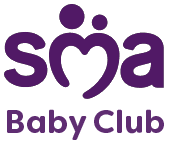Introduction
Before you meet your mini-me there’s one big, exciting, possibly daunting, bit to go through: labour.
Ideally before baby comes a-knocking you’ll have packed your hospital bags, chosen your birthing partner and have a copy of your birth plan stapled to the front of your antenatal records.
To reach that stage of readiness you’ll want to have weighed up the pros and cons of various types of births and positions, and this is where we can give some info and advice.
The birth plan
A birthing plan is like your very own agenda for what happens on the big day. Together with your partner and midwife you can create a comprehensive birth plan, so the labour and delivery are as close as possible to how you’d like them. Remember to be flexible though as things don’t always go to plan.
-
Where you’d like to give birth: home, hospital or birth centre
-
What pain relief you might want, if any
-
How you want to deliver baby
-
The benefits of skin-to-skin contact with baby after birth (for both of you)
-
How long you want the placenta to stay attached after delivery
If you need a handy tool to help put your plan together the NHS have got some information on that. It’s not set in stone though, so be prepared to go off script later on if you need to. We also have a handy checklist of things to consider for the birth plan.
Practising for labour
Before the big event there are some really useful classes you can attend to help you feel ready for labour.
-
Antenatal classes These are group sessions to help you prepare for labour and taking care of baby afterwards. The classes get you practicing breathing, positions and pushing the baby out but also cover the nitty gritty like nappy changing and breastfeeding. Plus, they’re great places to meet new mum-friends
-
Hypnobirthing This involves breathing and mindfulness techniques complete with a relaxing soundtrack to help you have a calmer and less painful labour. You can take classes from around the 32nd week of pregnancy. It’s usually a 5-8 week course to teach you all you need to know.
The birthing partner
Bringing a baby into the world isn’t all on mum. It’s fair to say that a big chunk of the work is being handled by the one carrying the baby, but a good birthing partner is invaluable when you are preparing for labour.
Early on it’s a good idea to decide who else will be there for the birth. For lots of mums that’s their partner but for others it’s the nana-to-be or a close friend.
The birthing partner has a pretty comprehensive to-do list. They’re there for emotional and physical support. So, apart from the movie cliché of finger-crushing hand-holding during labour; think brow-mopping, massage, water and snacks, and giving an encouraging pep talk.
When it’s time for antenatal classes it’s ideal if the birthing partner is there too. The birthing plan is also something they can be part of. They’ll probably be doing some of the speaking for mum on the day while she’s busy focusing on the delivery part.
Have a talk about whether they’re going to be present if any intervention or a C section is needed.
Types of birth
There are a few different ways to welcome your baby into the world. This might be something you’ve already had a think about, but it might help to talk to your midwife about all the options before you make your decision.
Here are the main ways to give birth:
-
Vaginal delivery
This one is pretty self-explanatory, it’s the most common type of birth. But even then, there are several ways to deliver a baby vaginally. You can choose whether you go with or without pain relief and drugs, such as an epidural. If you need an assisted delivery they may have to use forceps or a ventouse to help – with your consent of course. You may need stitches afterwards, although not everyone does, but prepare yourself for that possibility.
-
Elective caesarean
Otherwise known as a C-section. This can be planned for health reasons or occasionally by maternal request. The operation involves cutting open your tummy at the bikini line. You may be scheduled for an elective section if you’re having multiple babies, if your baby wants to be born bottom first (breech birth), if there are problems with the placenta or, if you’ve got severe pre-eclampsia. A date will be set but in rare circumstances it might move, so be prepared for that to happen. It will take place in an operating theatre, usually under epidural or spinal anaesthetic, although your anaesthetist will discuss this with you. You’ll most likely be awake but you won’t feel any pain, just some jiggling around.
-
Emergency caesarean
This is the name given to any C section that wasn’t planned for. Sometimes there are complications with labour and the best option for a safe birth at this point might be a C section.
Both planned and emergency C sections are serious surgical procedures so recovery will take longer than with a vaginal birth. You’ll definitely be kept in hospital until the next few days, if not longer and you’ll be recovering for the following six weeks at least.
-
Vaginal birth after caesarean
Also known as a VBAC. Just because you had a C section in the past, doesn’t mean that a vaginal birth is off the table. Around 75% of mothers who had C-sections are able to give birth vaginally next time. So, discuss it with the hospital doctor if it’s something you’re hoping for.
Birthing positions
When labour is shown on TV the woman is usually lying in bed with her legs wide open. But in reality, there are loads of birthing positions that look nothing like that. What’s more, they’re probably more natural and helpful for getting baby out. Here are some popular choices when preparing for labour:
-
Kneeling on all fours
This takes pressure off your back and is said to open up your pelvis and help baby get into a good position.
-
Side-lying
This is good if you’re feeling exhausted but it also helps get oxygen to the baby. A small pillow or birthing ball between your legs will help.
-
Standing
Gravity is your friend here and being upright helps your uterus contract more effectively. Make sure your birthing partner is prepared to get physically involved with this one - they’ll likely be clung to during this.
-
Squatting
Opens up your pelvis and helps manoeuvre baby through the birth canal. You can hold onto a chair or a sturdy birthing partner. You may even use a special stool with a hole in it for baby to pass through. This is another one where gravity helps. Don’t worry, your midwife or your birthing partner will be there to guide your baby on the way out. Like with any of these positions you may be offered a mirror to help you see baby’s position.
Where can I give birth?
-
Hospital birth The most popular option. With a building full of people who deliver babies every day and all the pain relief options available, as well as medical support and resources.
-
Home birth If you’d prefer to feel more at home when giving birth, then you can do exactly that. For some women this is a more natural and convenient option. Afterwards you can shower in your own place and get straight into your own bed. Don’t worry, you won’t be riding solo. The midwives, usually two, can come to your home for this, but you’ll need to discuss with them beforehand.
-
Birth centre There are specialised centres kitted out purely for delivering babies. Sometimes they have these in hospitals. They’re usually more relaxed than hospitals, a sort of happy medium between a hospital and a home birth. But like with a home birth, if you do need extra care during labour you may end up being transferred to a hospital.
-
Water birth Many mums say a warm water birth delivery is much more comfortable and relaxing in comparison to delivery on dry land. Many don’t even require pain relief. With a water birth you’re usually the first to hold your baby. A birthing pool can be set up in your own home or you can find them at a birthing centre and most hospitals. If it’s possible, and the midwife agrees to it, your partner can even hop in with you for support – but again, check this with your midwife.
Labour pain relief
There’s no doubt about it, labour and birth comes with some pain, it’s up to you how you manage these symptoms of labour. It helps to discuss the options with your midwife and your birthing partner ahead of time so you can put it in your birthing plan. Of course, you might change your mind once you’re experiencing labour. It’s worth bearing in mind that some pain relief methods require preparation or planning while others may be available if requested early enough during labour in a hospital or a birthing centre. Read more on the different pain relief options available to you.











